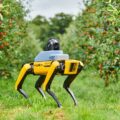Python is an interpreted, interactive, object-oriented & high-level scripting language. Python is designed for high legibility.
- Python is interactive
- Python is object-oriented
- Python is interpreted
- Python is a language for beginners
History of Python
Python was developed by Guido van Rossum in the late 1980s and early 1990s at the National Research Institute for Mathematics and Computer Science in the Netherlands.
Python comes from many other languages, including ABC, Modula-3, C, C++, Algol-68, SmallTalk and Unix shells, and other scripting languages.
Python is protected by copyright, Like Perl. Python source code is now available under the GNU General Public License (GPL).
Python is now managed by the Institute’s development core, although Guido van Rossum still plays an important role in driving progress.
Python’s features
Python features include:
- Easy to learn – Python has several keywords, simple structure, and clearly defined syntax. This allows the student to learn the language quickly.
- Easy to read – the Python code is better defined and visible.
- Easy to maintain – the Python source code is quite easy to maintain.
- Extended standard library – Most of the Python library is very portable and compatible with many platforms in UNIX, Windows, and Macintosh systems.
- Interactive mode – Python supports the interactive mode, which allows for interactive testing and debugging of code fragments.
- Portable – Python can run on different hardware platforms and has the same interface on all platforms.
- Extensible – You can add low-level modules to your Python Pen. These modules allow programmers to add or modify their tools to increase productivity.
- Databases – Python provides interfaces to all major commercial databases.
- GUI programming – Python supports GUI applications that can be built and run on multiple Windows system calls, libraries, and systems such as Windows MFC, Macintosh, and Unix X Window.
- Scalable – Python offers better structure and support for large programs than shell scripting.
In addition to the features listed above, Python has an extensive list of good features, only some of which are listed below:
- It supports both functional and structural programming methods and OOP.
- It can be used as a scripting language or compiled in byte code to create large applications.
- It provides dynamic data types at a very high level and supports the control of dynamic types.
- It supports automatic garbage collection.
- It can be easily integrated with C, C++, COM, ActiveX, CORBA, and Java.
Previous
